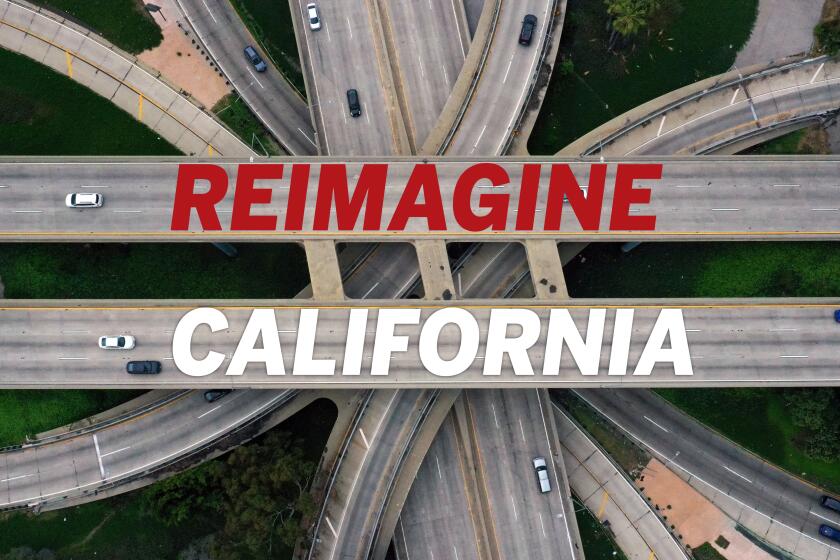25 top theater minds dream the future: What will the post-pandemic stage look like?
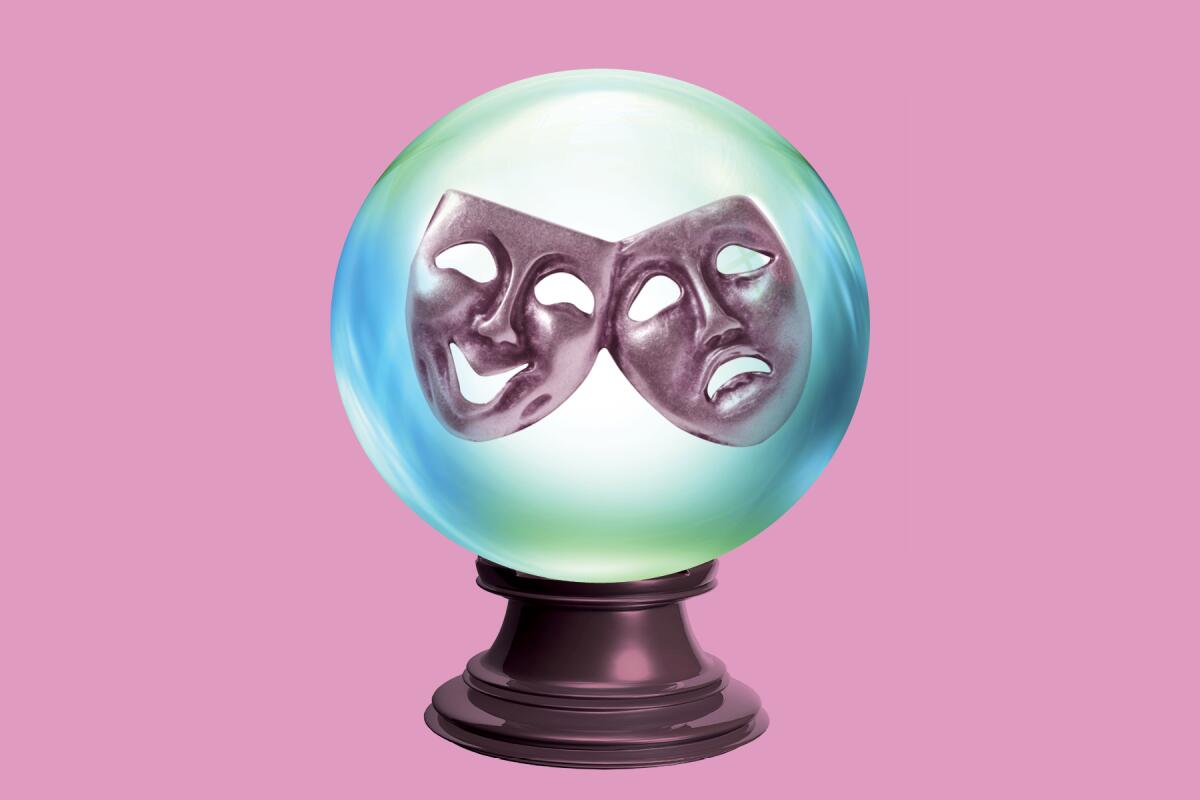
- Share via
No one knows when the theaters will reopen, when actors will be able to rehearse in safety or when audiences will feel confident that attending a show won’t kill them. It could be months away. It could be more than a year.
One thing that’s certain is that theater will return. Man, Aristotle observed in “Poetics,” is an imitative animal. We learn through mimicry, a form of acting, and through enactment, the basis of drama. The stage isn’t simply a leisure time extravagance. It springs directly from that reflective consciousness that distinguishes human nature.
But while no virus can defeat this art form, the theater will have to change to meet the challenges of a transformed world. While we’re mourning the loss of playgoing among the myriad other losses exacted by this pandemic, I’ve asked artists to imagine the future. How might we rethink basic structures (economic, architectural, aesthetic) in this period of forced reprieve? How might fresh vision transform crisis into opportunity?
At the end of “Angels in America,” Harper, flying off to San Francisco for a new beginning, leaves us with this thought: “In this world, there is a kind of painful progress. Longing for what we’ve left behind, and dreaming ahead.” Artists, those virtuosic dreamers, help us navigate our way into the unknown while not letting us lose sight of the trail we’ve left behind. Our stages may be dark for the foreseeable future, but the theater of new possibility is open for contemplation. These written responses to my query have been lightly edited for clarity and length.
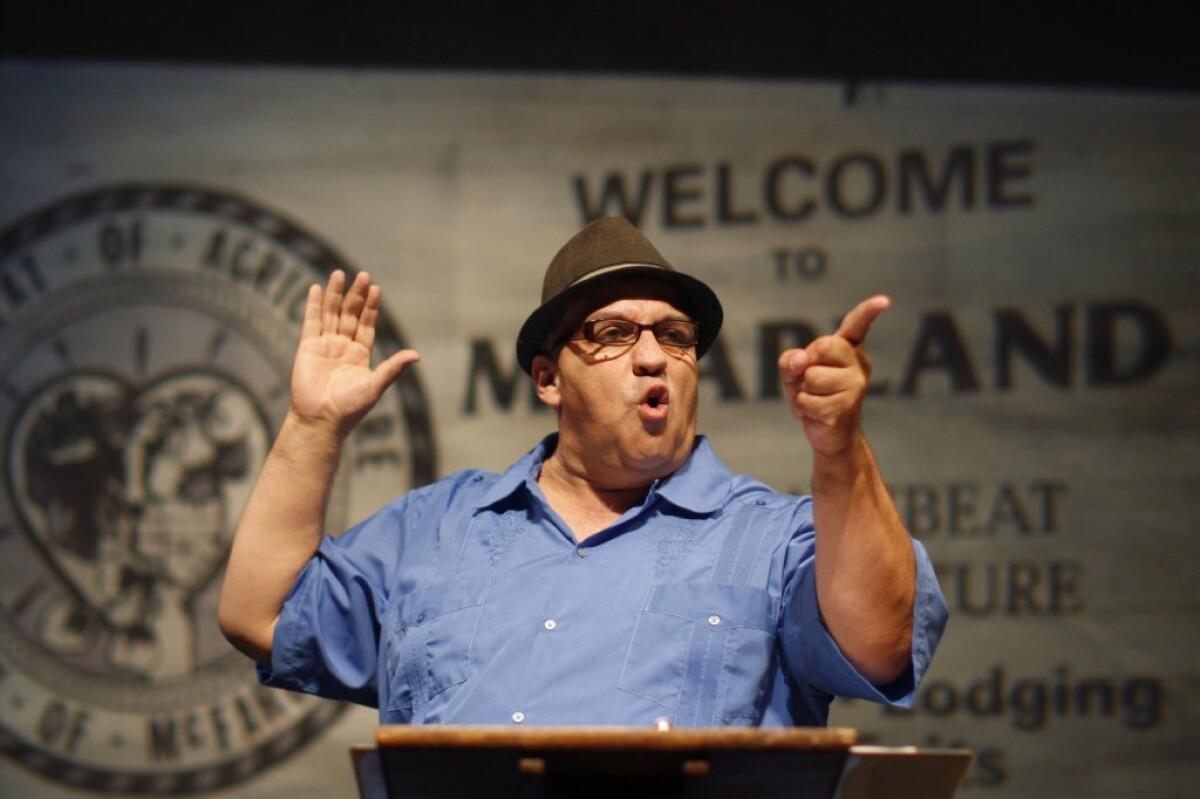
Luis Alfaro, playwright (“Oedipus El Rey,” “Mojada: A Medea in Los Angeles”)
I am most excited about a post-pandemic theater that embraces its literal beginnings to find itself; sound and movement; an actor and language; story in space. A deck, a chair, a performer? I would love to see our reentry, a symbol of our ability to recover, rely on the simple virtuosity of the actor telling our stories. That would mean we would have to think of our audience. A Los Angeles theater that looks like its community would demand that a county of over 10 million, with 185 recognized languages, replace its leadership, the radical act in a radical time would demand that boards, artistic directors, etc., reflect their community. I am personally not thrilled to go back to the theater we had; it doesn’t look like this city. This pandemic pause has been a meditation that should move into action.
Patti LuPone, two-time Tony-winning actress
I don’t know how art will change. Maybe it will be joyful because we’re back in our theaters. Maybe playwrights will write hilarious comedy. What I do know is if we are to return to our beloved stages, they must be cleaned, sanitized and fumigated. More often than not when theaters are renovated, the backstage, the dressing rooms, the fly floors and the alleys are neglected. We work in perpetually filthy environments. It’s essentially a petri dish. It’s time theater owners take a hose and cleaning fluids to our workspace. In fact, the workforce backstage and the audience out front will be safer. And that’s what we need if we’re ever to return to our beloved theaters, where we’ll feel totally safe, protected and healthy.
Michael R. Jackson, playwright, composer, lyricist and 2020 Pulitzer Prize winner for drama (“A Strange Loop”)
The COVID-19 pandemic has ruthlessly exposed all longstanding, preexisting inequities in our world. It’s almost like we’ve wandered into the kitchen late at night, flipped on the light switch and found every surface covered in roaches. But instead of skittering to hide, the roaches just linger and stare back defiantly. So whenever we are able to gather together again, I would like to see theater (inclusive of musical theater) that is willing to ask more pointed, imaginative, theatrical and potentially self-implicating questions about the nature, history and complexity of this infestation.
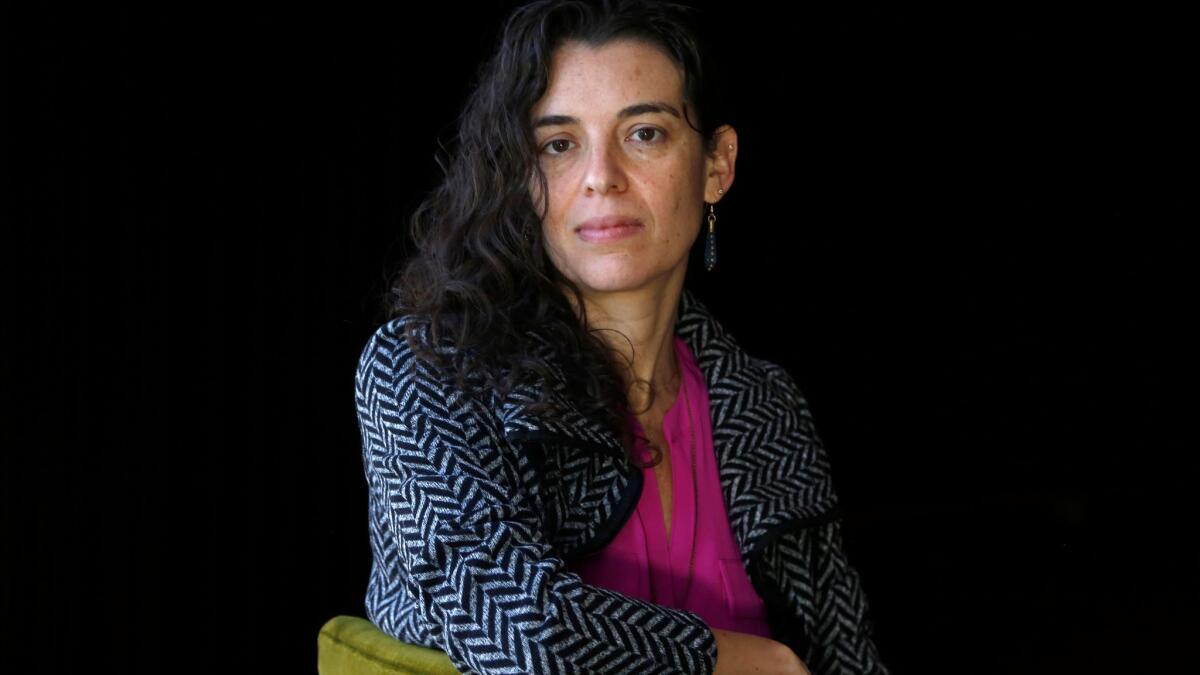
Quiara Alegría Hudes, Pulitzer Prize-winning playwright (“Water by the Spoonful”) and author of the book for the Tony-winning musical “In the Heights”
I have a lot of dreams for the theater. One is to start a new playwriting training/program/pod/amoeba where playwrights and architects are in a lab together. Playwrights must then not just write plays but also design and physically build the performance space for that particular play.
I come from a line of carpenters and builders, and my brother, Forrest Hudes, has taught me how the form of a piece of furniture dictates and limits our relationship to space. I think this a lot about theater. I love going to a fancy theater. Possibly my favorite fancy theater memory is “Jerusalem” — I was in proscenium heaven. This was the big event, the entertaining, moving art I go to Broadway to see. There was the catharsis, there was the laughter, there was the spectacle. He drank a raw egg!
But I worry that theaters are too fancy and that what that means is that little emotionally dangerous can happen in those fancy spaces. It’s too easy. Too bougie. Too operatic. I worry that regional theater’s capital projects have become aesthetically numb and force a play delivery system where eight very different plays in a season nonetheless develop an aesthetic sameness. It becomes too predictable, too safe, too sanitized. There is no edge or wonder walking into a theater lobby.
I want rough spaces. I want surprising spaces. Spaces where I don’t necessarily know what I will experience when I show up.
Yazmany Arboleda is an artist who is helping me run my prison writing project, Emancipated Stories. I asked him to help me conceive how to make a physical gallery of our collection for Signature Theatre’s lobby this fall. It would include a performance element — some of the Emancipated Stories read aloud. His first instinct was that the audience arrives and the theatergoers have to assemble the performance space together, as their first act. I had never told Yazmany about my dream when he shared his idea. So there’s something in the zeitgeist perhaps ...
I also think of Meshell Ndegeocello’s remarkable “Can I Get a Witness?” at Harlem Stage. She transformed the place into a rock ’n’ roll church. Pews and amps and a huge tapestry of James Baldwin as the altar. I am reminded of my mother’s own religion — Lukumí (popularly known as Santería). It is a living room practice. There are no prebuilt churches you attend. You must build the church — the altars — yourself. In your living room. In your backroom. In your sunroom. In your basement. At your entryway. Out of the rough-hewn stuff of our lives, you must find safe places to worship and earn your worship through being a builder.
I crave theater made out of the rough-hewn stuff of our lives. A theater of junk and reclaimed nooks. A theater of secrecy and sacredness and participatory respect. A theater where we earn our experience by shedding complacency. A theater that no one in their right mind could label content.
As an undergrad, I wrote a musical about Yoruba worship in the New World. It ended with the couplet: “In every lonely place find love / in every love find thunder.”
I am craving the lonely place that makes the love more salient, if less lovely.
Tarell Alvin McCraney, playwright (“The Brother/Sister Plays”) and Oscar winner for “Moonlight”
I wish I could at this point give prognostications on the industry or the necessity of our art and our connection to the audience. Currently, I have had my mind stayed on “being present.” Looking at the world and being as grateful for what I can be, as mindful of what I cannot control, and as open to joy as possible.
This weekend, we had funerals for my mother’s sister and my grandfather’s sister. One we know for sure was COVID-19 related. The next day was Mother’s Day, and looking at my cousins, the same ones who were there for me when my mother died years ago, I tried to bring them comfort and make sure they knew they‘d done their best. Still, the hardest part was knowing that it, the loss of a parent so suddenly, so swiftly, does not get easier, that the heartbreak does heal but surely scars and that the best thing I can actually do for them right now is hug and hold them close — but via Zoom, and masks, and gloves and texts and social distancing; flowers sent via essential delivery service and checks sent in the mail would have to do.
Emily Mann, playwright, director and outgoing artistic director of McCarter Theatre
First of all, I do not believe we are ever “going back to normal,” if that means returning to making theater the way we did before the pandemic. I am exhilarated by the forced reset. It demands asking the essential question — is theater necessary? Just as we did in the ’60s and ’70s, inspired by Peter Brook’s “The Empty Space” and Jerzy Grotowski’s “Towards a Poor Theatre,” we will have to strip down to what is fundamental to making great theater. Some of the most important work of the 20th century came out of this movement.
Plagues have closed theaters before. And they reopen, often stronger than before. Shakespeare wrote “Macbeth,” “Lear” and “Antony and Cleopatra” during his quarantine, his finest work. I am excited to see what the future brings to our beloved and besieged art form after this period of enforced meditation. We will have to demonstrate why we are necessary.
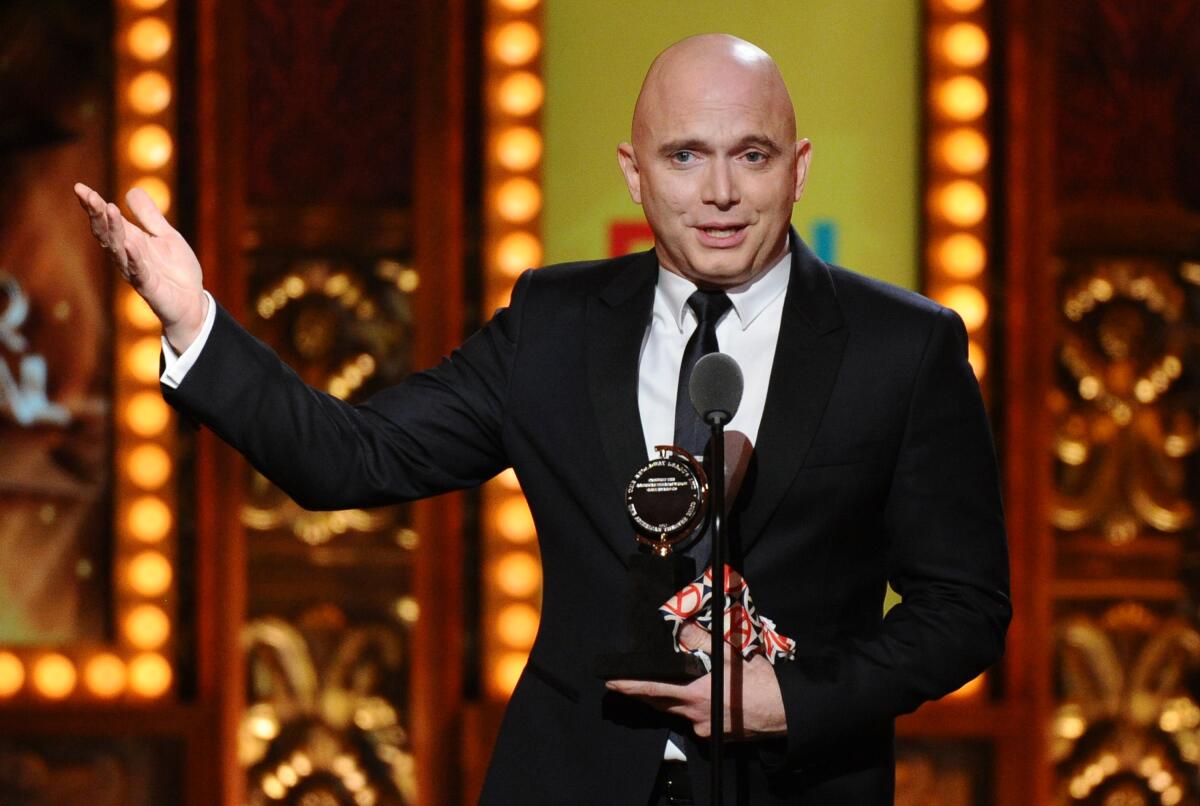
Michael Cerveris, Tony-winning actor of “Fun Home”
Lately, I’ve been asked to offer words of encouragement to scores of high school and college theater students during teleconferencing classes and graduations. And despite my daily grappling with despair, I do see in this dark, chaotic time reasons for great optimism. When the rules no longer apply, we can write new rules. Young people especially will have a great deal to say about our future, and I do hope they’re taking time to imagine a better world and a better theater now — while they seem to have some time on their hands.
I have always believed the act of theater to be an act of service, and at its best, a selfless one. Writers, actors, directors, designers, craftspersons, staff, front of house and producers all work (ideally) in service of a shared idea, and the performance is offered in service of the audience for the greatest possible good of the community. So in imagining the far off, post-pandemic theater, I most want to see a theater with its priorities wholly focused on human beings and community.
If we have to talk about “show business,” I’d like that business to care first about the well-being of the humans that make it and receive it. That means putting fair wages and healthcare before profits. It means prioritizing salaries over spectacle and valuing creativity, simplicity and ingenuity over lavish producing, marketing, self congratulating and selling. It means getting rid of the ideas of performance as product and audience as consumer, and caring more about comfort, safety and accessibility for the greatest number and variety of people.
I hope thinking of the future of theater (itself an act of almost reckless courage these days) might also lead us to rethink the way commerce and capitalism have distorted the making of theater. I’d like the everyday, working-class, front-line workers we currently and deservedly revere, from hospital staff to sanitation workers and grocery clerks, to be able to see theater as an art with a place for them as well. That means it would be both affordable and focused on inclusivity and telling the widest variety of stories.
I’d like to see a nationwide flourishing of the regional theater movement, with local theaters considering how best to earn the title of an essential service in their particular community, while being supported and valued by that community and the government. A WPA Federal Theatre Project for a new century, perhaps.
And while I believe there should be room for everything from entertainment to enlightenment, I’d personally like to see a turn from plays and musicals of easy snark and cynicism toward works of compassion and activism. I guess, fundamentally, I want the theater to assume (or regain) the mantle of leadership in showing us a better way to live together. That means leaning into discomfort, embracing uncertainty, asking deep questions, questioning the status quo, rigorously making more room and ceaselessly trying to reflect and see our shared humanity.
One last thought from a not-quite dinosaur: I don’t think an unfettered embrace of technology is the way forward for our storied, most human of art forms. For now, I’m rereading “The Empty Space” and “Towards a Poor Theatre.” And not just for their titular aptness.

Lynn Nottage, two-time Pulitzer Prize-winning playwright (“Ruined,” “Sweat” )
Optimism is what’s dragging me through these pandemic days that have stretched into months. It has given me time to think about how and why I want to return to making theater. It is my hope that when we’re able to gather en masse that we rethink the tyranny of the proscenium stage and our dependency on making theater in traditional and exclusionary spaces. No doubt, people will desire robust and healing storytelling, but we have to ensure that we create an environment where theater is accessible to everyone.
It means rethinking where and how we bring theater to audiences, and pushing institutions to seek out more expansive, inventive and accessible ways of presenting the work of theater artists. I’d love for theaters to create at least one mobile or site-specific show in each of their seasons, a work that can be presented in a variety of venues, from gymnasiums to nail salons to neglected spaces. Too often the architecture of many arts institutions has shrunk the vision of artists and the reach of our work, and perhaps this is a moment to question and challenge whether the dominance of expensive proscenium stages is limiting the natural evolution of theater.
Young Jean Lee, playwright and director (“Straight White Men,” “The Shipment”)
My No. 1 wish for theater in the aftermath of this crisis is for our industry to become more aware of the ways in which we perpetuate economic inequality through our approaches to hiring, gatekeeping and funding. Also, now that we’ve finally started opening doors to more people who aren’t white men, the next step is a truly intersectional approach to diversity that is open not only to women and a handful of ethnic groups but also to the many other marginalized groups that are still relatively invisible.
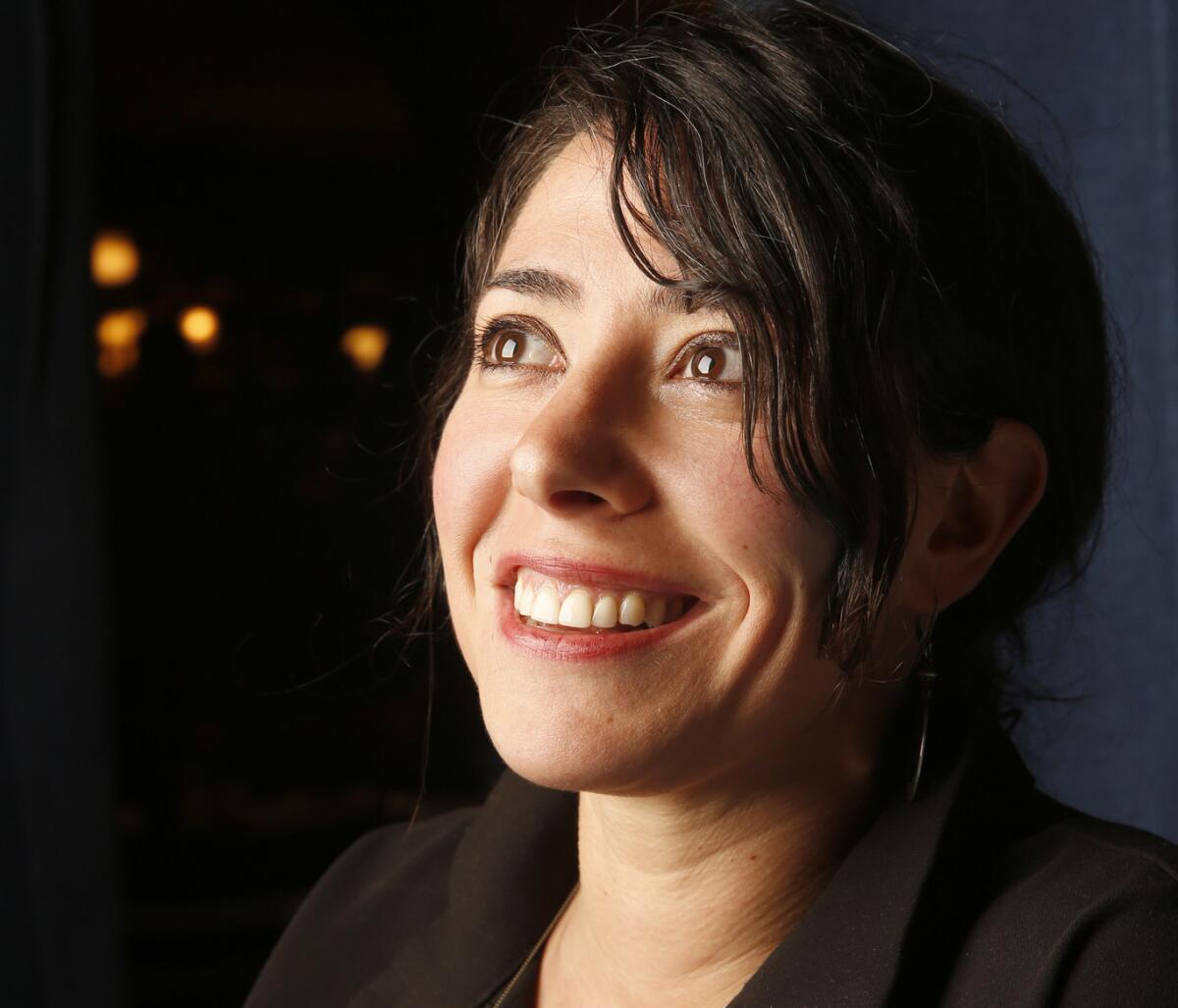
Rachel Chavkin, Tony-winning director of “Hadestown” and artistic director of the Team
I would like to see childcare centers established, staffed by a mixture of professionals and parent members, that provide care for children of workers in the entertainment industry — ranging from dressers to actors running to an audition to directors and dramaturgs. I would love in general to see universal childcare, something Elizabeth Warren has spoken about extensively and potently, and I think via the Actors Fund or a new organization we could absolutely make this happen and make a wild difference in the lives of those working in the arts. I also want to see the strong resumption of individual artist grants from the NEA and state arts agencies, as well as foundations across the country.
Bart DeLorenzo, director and founding artistic director of the Evidence Room
I fear that theaters will be among the last to reopen, but I hope that this purging absence will reveal how much we all need this ancient form. For our sanity, humans must gather in groups and experience our world together. I hope that theaters will recognize the power of their own communities and evolve into social hubs — not just 8 p.m. play boxes — and more richly and deeply interact with their audiences, finding new and better ways to engage them.
I hope that theaters become more local, telling their community’s stories, and get better at developing community artists to tell them. Like [Mayor] Eric Garcetti when he says, “Shop local,” I’d love to see a new Los Angeles theater that’s by and for Los Angeles and that owes little to last year’s Broadway fashion. And I hope that every community comes up with its own special renaissance — learning from outside, but less outright duplicating — so that we have as many new, different healthy theaters of the future as there are communities.
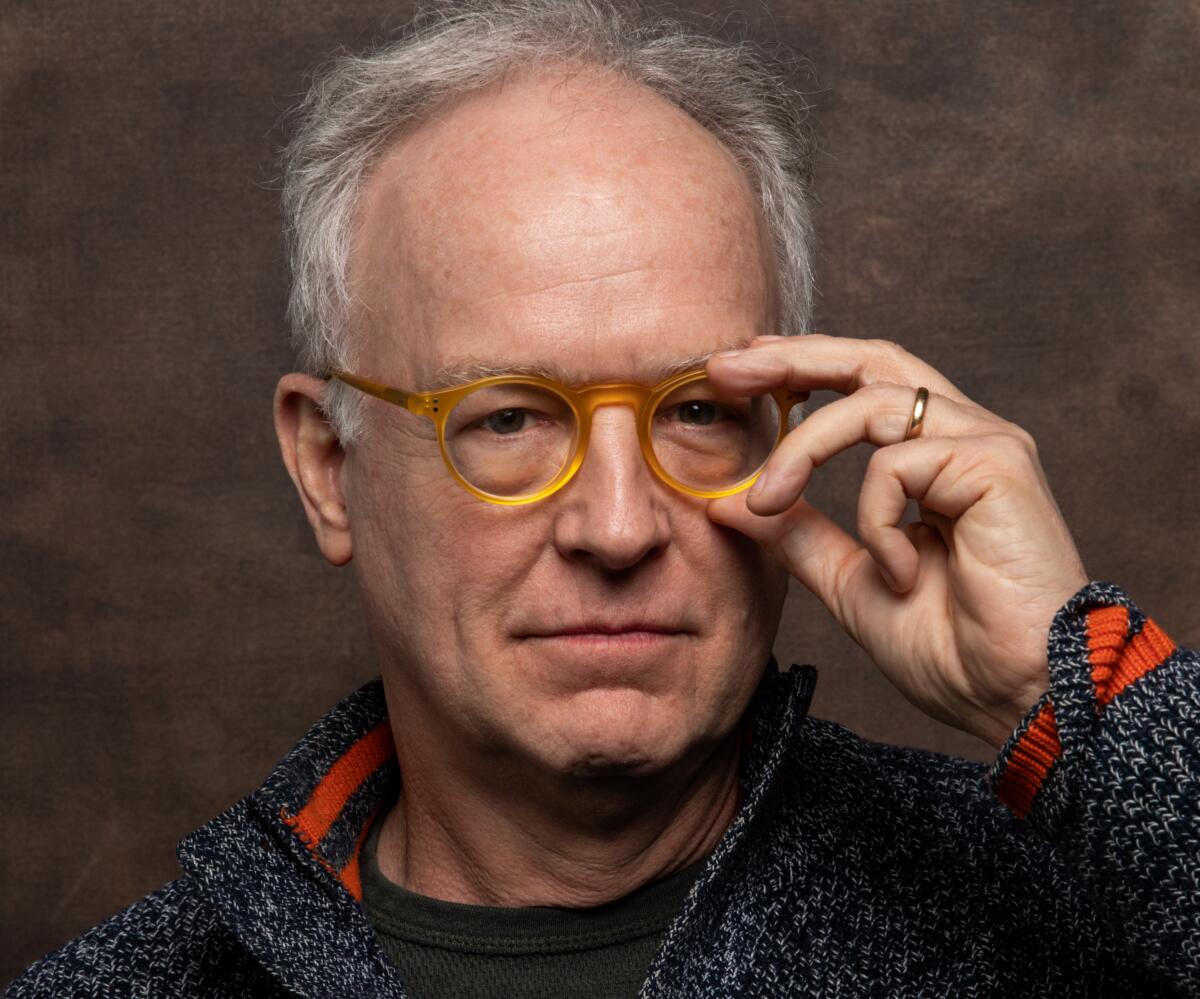
Reed Birney, Tony-winning actor of “The Humans”
Whenever I would watch one of the avalanche of post-apocalyptic movies that have inundated us in the last 20 years, I would wonder about what it might actually take in real life to send us into that dark world. We are told in those movies it is usually something monumental: a meteor crashing into our planet, aliens colonizing us, a detonated nuclear bomb. Zombies galore. Then, on Friday, March 13, our world changed overnight by a lethal version of the common cold. The Andromeda Strain. And we are told our world is now forever changed.
Am I naive to hope that this might be the reset that artists have dreamed of forever, the utopia of love and peace and generosity of spirit that has always inspired us? It is now clear we could not have continued as we had been. We now know what it would take. But I would love to think that when the plague clears, we are left with a world where the stories we tell are finally life-affirming and unifying and joyous and fun. It probably can’t happen, given human nature and what history has taught us, and would there be any dramatic stories to tell in a world without conflict? Can a world populated with simple, lovely Eloi exist without the dreaded Morlocks? Who knows? But I would love to think that having survived 2020, our vision will be too.
Julia Cho, playwright (“Aubergine,” “Durango”)
Before the pandemic, I saw the phrase “extinction event” everywhere, referring to ecosystems, disciplines, entire modes of inquiry. And now here we are, and to be honest, I am afraid. And yet. When I think of theater in the future, I imagine an unrecognizable landscape lighted by the explosion of all the stories we told ourselves in the dark, detonating at once. I don’t know what that land will look like, but I believe it will be somewhere we’ve never been.
Annie Dorsen, director (“Passing Strange,” “A Piece of Work”) and a 2019 MacArthur fellow
One of the democratic reforms Pericles is supposed to have made in Athens was to introduce public fees. These were not fees paid by citizens, but fees paid to them. They enabled working people to participate in politics (i.e., to take time off work for civic duties) and to attend the theater, the cost of tickets covered through a special fund. This is a great idea. Rather than limiting public subsidy to theater institutions for the creation of work, we should also subsidize attendance. A yearly stipend, say, for each resident of the U.S. — in Athens, the fees were offered only to citizens, but we should obviously not accept that restriction — to spend on theater. Some money would flow through the familiar pathways to fortify the supply side, and some new funding would be made available to drive demand.
I’m not sure if I’m joking.
What I really hope for now, and for the months and years that we will call “after,” is that we use our time well. We should not jump too quickly to put everything back the way it was. We have an opportunity to imagine and institute entirely other ways of doing things. The big question: What role should theater play in the strengthening or reconstructing of our commons? We are mostly alone now, in our private lives, in our different circumstances. Soon, we will need to come back together, to rebuild a shared world. Artistic communication has an essential role to play in establishing the terms of our cooperation.
Also: Artists need Medicare for All.
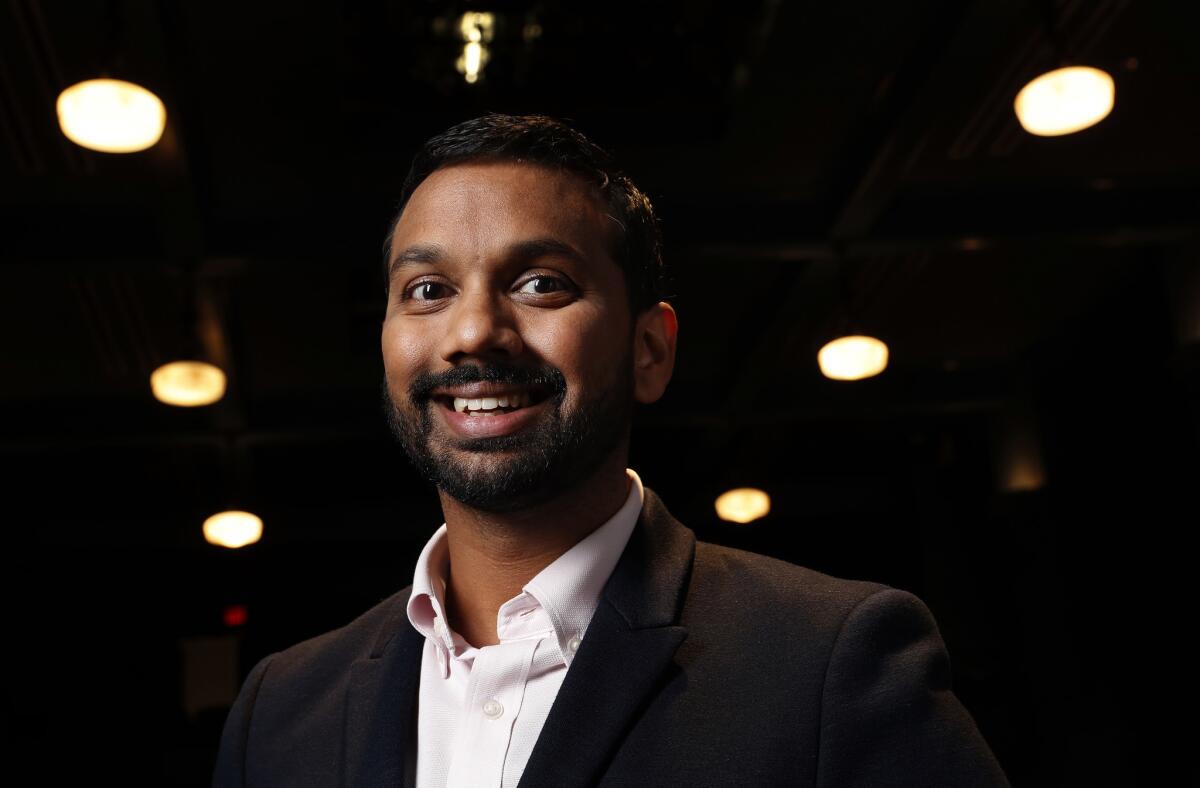
Snehal Desai, artistic director, East West Players
The questions that are resonating with me the most right now are: What do our communities need, both now and once we get on the other side of this pandemic? How can we show value beyond entertainment in our communities? How can wellness and healing be lifted up in the work we do going forward? How do we bring people together safely? How will we acknowledge the social and structural inequities laid bare and most of all the grief we have yet to truly process?
Coming out of this I hope we are able to challenge the idea that size of space, money and glossy production values equate to quality, value or transformative art for our communities. We will also have to interrogate a business model where three significant income streams (ticket revenue/subscriptions, holiday shows and in-person fundraisers) will not be something we can rely on in the ways we did pre-COVID. Community, government and private foundations are going to need to step in and support us if we are to survive, and we will need to innovate the way we produce to have any sort of future going forward.
What we are learning from our counterparts in other parts of the world is that we need to be prepared to open and close on short notice for the foreseeable future. For this to be feasible and at all fiscally possible, new work, original work and local artists are going to be what give us that flexibility.
Kristy Edmunds, executive and artistic director, Center for the Art of Performance at UCLA
The future of theater is now a daily discussion with colleagues and makers, and for urgent reason. Some center on sharing survival strategies for bridging this period before picking back up where everything was left off. There are frequent reminders that the theater has lasted through the ages and will rise again once the curtain goes up. Others are embracing a more radical re-imagining for how theater can adapt to new frameworks. With the truth of how vulnerable our economic balancing act is has been made vivid, we see the impact across every sector of our interdependent communities.
In this excruciating pause, artists and leaders are using the suspension of our overpressurized operating models to address the gaping cracks and inequities along America’s cultural sidewalk. This is the most epic project we have undertaken in our lifetimes — to collaborate on a future that will not be as unevenly distributed as the past has been.
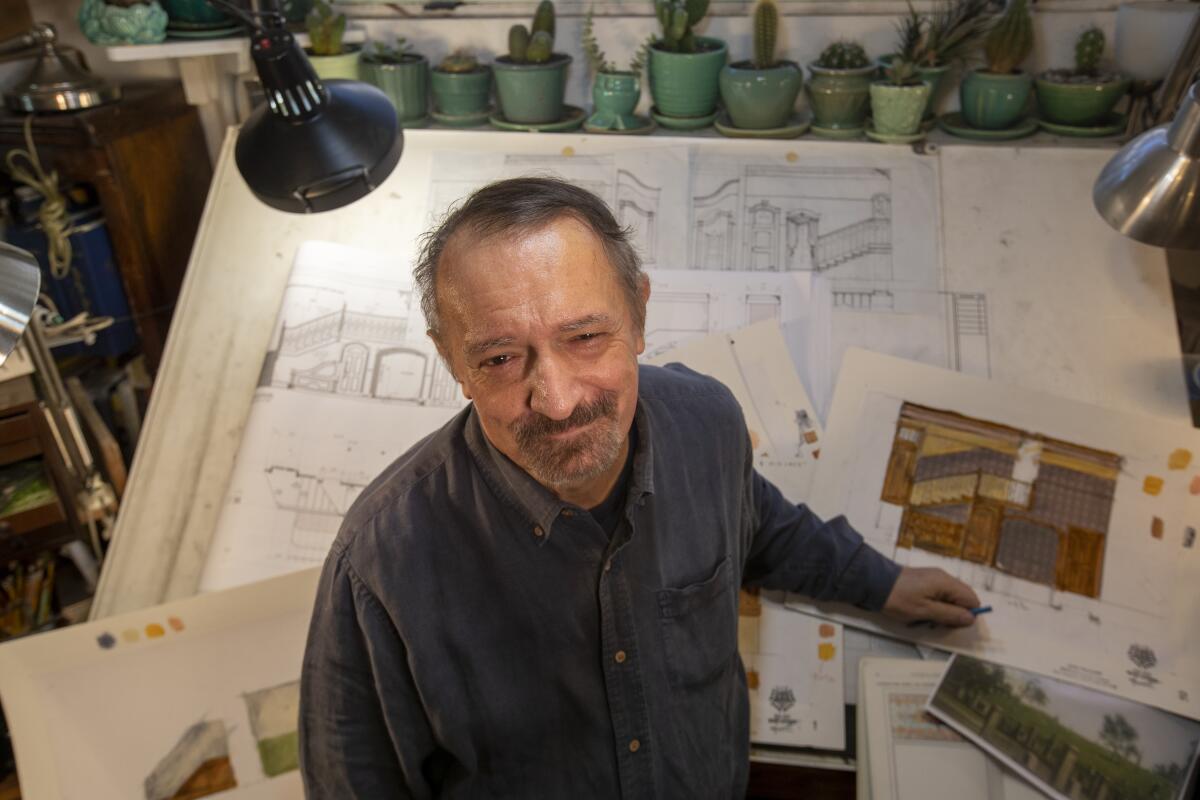
John Iacovelli, Emmy award winning scenic designer
I don’t know what will get me back into a normal theater in the next year. I think the transition will be difficult. Many theaters, big and small, will not recover. Some audiences will never return. Here are some other thoughts on how to survive in the short run:
Recommendation No. 1: Use local talent. I understand places like the Wallis, the Broad Stage, Center Theatre Group and South Coast Repertory want the best theater practitioners — not just in the Southland but anywhere. That is why 80% to 90% of the actors, designers and directors who work at those institutions are from the ZIP Codes around Manhattan. Yet I can envision full seasons of artists that have L.A. and Orange County ZIP Codes. Directors such as Cameron Watson, Jessica Kubzansky, Michael Michetti and Casey Stangl. Scenic, lighting, costume, projection and sound designers such as Cricket S. Myers, Tom Buderwitz, Sibyl Wickersheimer, Denitsa Bliznakova, Brian Gale and David Murakami. Actors like Rob Nagle, Anne Gee Byrd and JD Cullum, whom we normally see at the Road, Skylight and Antaeus. There is such a wealth of talent I could easily put together whole seasons of both classics and new plays where we could save the cost and danger of air travel and the expenses of hotels and per diems.
Recommendation No. 2: Streaming is the new normal. NT Live has taught us how to do thrilling and engaging live productions on film. Just look at the wonderful experiences in their broadcasts of “Frankenstein,” “The Lehman Trilogy” and “Follies.” Our theaters could do this too and have a whole other revenue stream.
Recommendation No. 3: Theaters will need to be redesigned for easier access, more aisles, fewer seats. If history has taught us anything, that is after an economic downturn, there will be fewer actors onstage with fewer scene changes and fewer costumes. More weight will be on lighting and projection design. Poor theater will feel more poor. This is when political and polemic theater could help get audiences back into the theater. Think of Brecht coming after World War II and even plays like “Marat/Sade” or the musical “Hair” as a tonic to a troubled age. This could be a new age for striking drama (if we let it.)
The Wallis responds:
John Iacovelli’s comment that the Wallis hires 80% to 90% of its actors, designers, writers and directors from New York is factually incorrect. Only 25% — at most — of our theater productions’ actors, designers, writers and directors are non-local. Additionally, the majority of artists in the Wallis’ music, dance, cinema and family productions and presentations are based in the Los Angeles artistic community. In particular, this season’s dance programming was specifically curated by Artistic Director Paul Crewes to feature only Los Angeles-based dance companies.
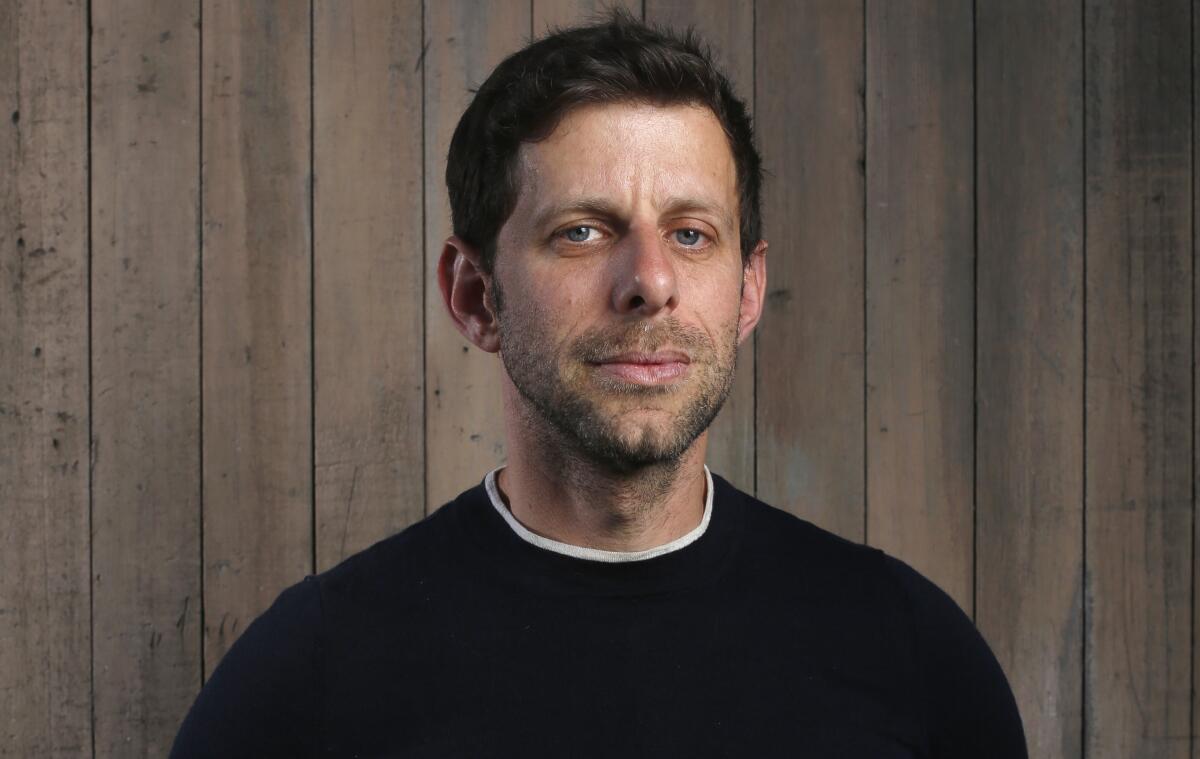
Yuval Sharon, artistic director, the Industry
To imagine post-quarantine performing arts, I like to contrast two images of mass gatherings that have been happening in the last few weeks: the anti-Netanyahu protests in Israel, and the anti-governor demonstrations happening in Sacramento and Orange County.
While the ones in California try to reclaim “normalcy,” with unmasked bodies pushing together to replicate protests in the “good ol’ days,” the Israeli protest had its own aesthetic beauty, with everyone 6 feet apart and following lines on the floor. You could almost confuse the image with the chorus staging of an opera. (“Boris Godunov” leaped to mind.) The Israelis who came out to protest worked with their circumstances, ensuring that everyone could stay safe, and the result was that their urgent message was delivered with so much more force.
I think the performing arts will need both qualities — the embrace of circumstances and a vital sense of urgency — to reclaim art’s role as essential to our lives and our civic identity.
Christopher Shinn, playwright (“Dying City,” “Where Do We Live”)
I’d like to have hopes and wishes for a post-pandemic theater, but it feels futile to entertain any. I think this has less to do with our industry and more to do with our society in general. We seem unable to imagine meaningful new ways of organizing ourselves — the corporate superego hangs over all of us, all the time. Our culture is no longer a space for shared dreaming and debate, it’s a game. And all there is to do with a game is try to win — which we do with greater or lesser enthusiasm depending on our level of sociopathy.
Adam Greenfield, incoming artistic director, Playwrights Horizons
Right now, charting a course for the future feels like a game of sudoku in which the starting clues keep changing squares. Or maybe it’s like drawing a picture in sand with a stick at high tide? For me, the last eight weeks have been consumed largely by making plans and then revising them, as new facts and forecasts continuously change the outlook.
As I prepare to begin leading Playwrights Horizons this summer, when we celebrate 50 years in existence and plunge into the institution’s second half-century, this pandemic has forced all of us in theater to rethink our models and practices, and to imagine new templates for the event of live storytelling and the means by which we experience it. Along with the waves of uncertainty and heartache, I’m feeling a certain liberty in the task of reinventing. I find myself wanting to distinguish the modern theater institution and all of its packaging from what’s most fundamental to the art form: actor, stage, audience, text. Considering the austerity measures we’ll no doubt face, I put my faith in the strange, resilient chemistry at theater’s core
I just reread “The Empty Space” and “Towards a Poor Theatre,” neither of which I had cracked open in two decades. I cling to Charles Ludlam’s gorgeous manifesto about theater as “a humble materialist enterprise which seeks to produce riches of the imagination, not the other way around,” and to Jane Jacobs’ ideas about what makes cities thrive — which, to me, have always doubled as a road map to making a theater that’s vital.
I hope that we see a return to what’s essentially theater and that we manage to cultivate a renewed awe about it. What I hope not to see is a widespread embrace of Zoom theater or streaming theater or video theater as an alternative to the live event. I hope that our message to the world as a theater community is that the event of live theater can’t be re-created or approximated digitally.
For Playwrights Horizons specifically, I keep going back to our name, which signals a commitment to following playwrights toward the future, the “horizon.” Confronting the tricky question of what theater might be on the other side of this, my instinct is to look to artists — particularly writers — to illuminate the paths forward.
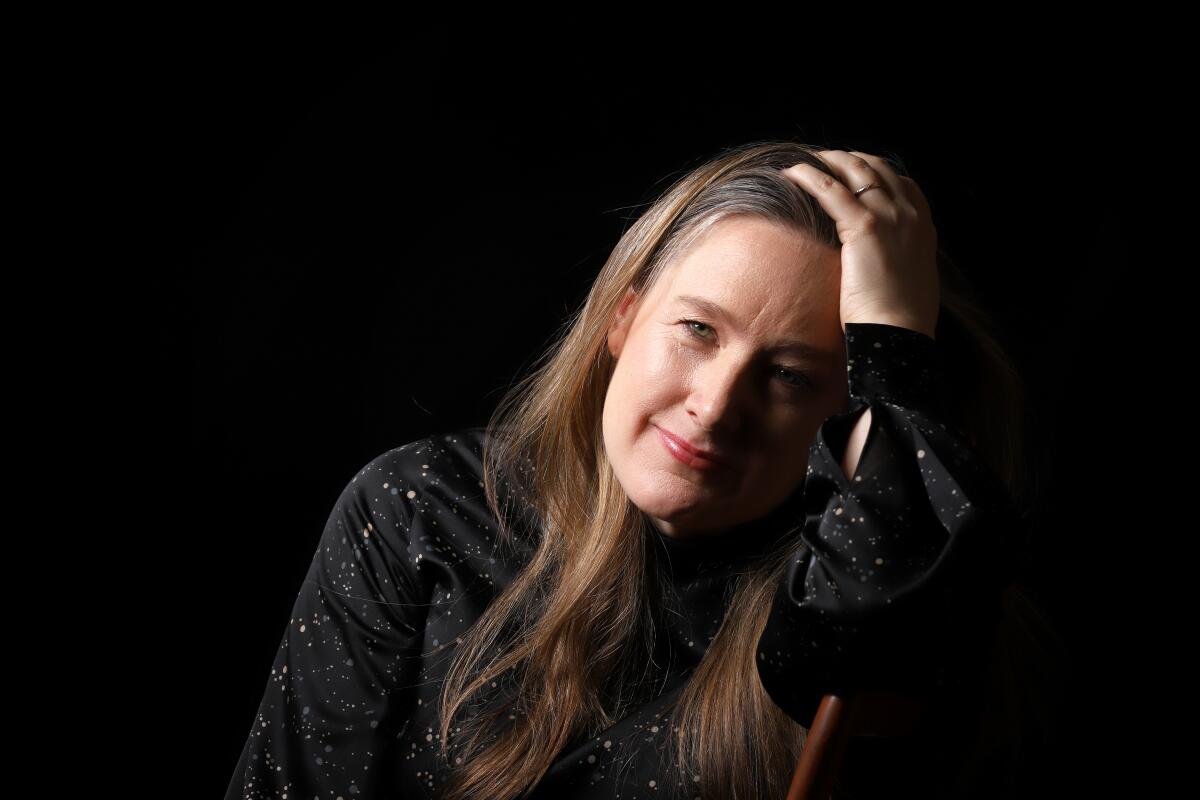
Sarah Ruhl, playwright (“Eurydice,” “In the Next Room, or the Vibrator Play”)
I suppose what I wish for the theater is a remembrance of the ancient, ritual form — less emphasis on “content” and the new — and more emphasis on ritual. Why do we come, why do we gather? It feels very clear in the age of Zoom theater why we gather. We are an art form of bodies meeting in space. Budget for sets be damned. We show up at a place and time when others show up at a place and time because place and time matter.
Perhaps the communities around theaters will need different things from the art form. They might be hungry for food as well as theater. Theaters might have to start being in the business of handing out free bread along with their art as they did in Chicago in the ’60s under the tutelage of Joyce Piven and as Bread and Puppet Theater still does.
Theaters might have to redefine employment during a time of mass furloughs — they’re going to have to find a way to pay artists as best they can. We might need theater soup kitchens. We might have to make soup, bread and theater and give it out to people who need it. We’re going to have to see less money spent on couches for the set and more money spent on the bodies that procure those couches from second-hand shops. We might have to redefine what counts as sustenance in the theater.
Mara Isaacs, producer (“Hadestown”)
Rather than return to a commoditization of the work (which had become the pre-pandemic norm in both nonprofit and commercial sectors), we must reinstate rigor in place of complacency, commit to equitable practice and foster diverse, authentic, accessible and unique experiences that cannot be replicated in any other form.
Joe Mantello, two-time Tony-winning director
I keep getting asked the question: “When will things return to normal?” and I’m just not sure there is a going back — certainly not to the way it was before. Perhaps that’s a good thing?
I’ve been considering the notion of a pause and what we can learn from it. A void allows space for us to examine the thing that’s missing. And if we fully experience that absence, contemplate the loss, perhaps when the new day arrives we will all — artists and audiences — discover a newfound appreciation for something we’ve taken for granted for far too long.
At least I hope so.
Diane Paulus, artistic director, American Repertory Theater at Harvard University and Tony-winning director of “Pippin”
When we reopen, I hope we will see every theater demonstrating how essential we are by providing the space for vital civic dialogue about a vision for the future and the world we want to be. I hope to see a great outpouring of plays and musicals that help us overcome the trauma of this pandemic, that address our shared humanity and that imagine how we can do better. With a newly understood commitment to public health, our facilities will need to be breathable and reflect the highest standards of “healthy buildings” strategies. I hope we will maximize the impact that theater can have as a form of public health.
Stephen Sachs, artistic director, Fountain Theatre
All of us in the American theater will be forced to redefine what it means to be an “essential” worker. When theaters reopen in a post-pandemic world, it will be critical for us, as theatermakers, to advocate how theater is essential for public health. How we have a vital role to play in the national recovery. For healing, for comfort, to express anger and outrage. Sadness, hope, laughter. Our theaters will provide a place to regather as a community and find meaning and human connection. Our art will be essential.
Help the Los Angeles Times reimagine what California should look like after the COVID-19 pandemic ends.
More to Read
Updates
1:36 p.m. May 20, 2020: This article was updated to include the Wallis Annenberg Center for the Performing Arts’ response to what it said was an incorrect statement by John Iacovelli.
The biggest entertainment stories
Get our big stories about Hollywood, film, television, music, arts, culture and more right in your inbox as soon as they publish.
You may occasionally receive promotional content from the Los Angeles Times.
